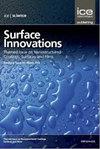Self-crimping of multi-chain polymers into carbon nanotubes
IF 3.5
4区 材料科学
Q3 CHEMISTRY, PHYSICAL
引用次数: 0
Abstract
In this manuscript, the self-crimping process of multi-chain polystyrene into carbon nanotube was investigated by molecular dynamics simulation. The simulation displays that the multi-chain polystyrene arranged in parallel can self-crimp into carbon nanotube and form a helix configuration. The formation mechanism illustrates that both the van der Waals potential well and the π–π stacking interaction between polystyrene and carbon nanotube play a major role in the self-assemble process. Furthermore, some factors such as the chain number of polystyrene, the length of polymer, the diameter of carbon nanotube and the simulation temperature are also investigated. Moreover, different replaced polymers are exhibited, too. This theory research can provide valuable theoretical support for design and manufacture hybrid structures in the fields of advanced composite materials and functional devices.多链聚合物自卷曲成碳纳米管
本文采用分子动力学模拟方法研究了多链聚苯乙烯自卷曲成碳纳米管的过程。仿真结果表明,平行排列的多链聚苯乙烯可以自卷曲成碳纳米管并形成螺旋结构。形成机理表明,聚苯乙烯与碳纳米管之间的π -π堆积相互作用和范德华势阱在自组装过程中起主要作用。此外,还对聚苯乙烯链数、聚合物长度、碳纳米管直径和模拟温度等因素进行了研究。此外,还展示了不同的取代聚合物。该理论研究可为先进复合材料和功能器件领域的混合结构设计和制造提供有价值的理论支持。
本文章由计算机程序翻译,如有差异,请以英文原文为准。
求助全文
约1分钟内获得全文
求助全文
来源期刊

Surface Innovations
CHEMISTRY, PHYSICALMATERIALS SCIENCE, COAT-MATERIALS SCIENCE, COATINGS & FILMS
CiteScore
5.80
自引率
22.90%
发文量
66
期刊介绍:
The material innovations on surfaces, combined with understanding and manipulation of physics and chemistry of functional surfaces and coatings, have exploded in the past decade at an incredibly rapid pace.
Superhydrophobicity, superhydrophlicity, self-cleaning, self-healing, anti-fouling, anti-bacterial, etc., have become important fundamental topics of surface science research community driven by curiosity of physics, chemistry, and biology of interaction phenomenon at surfaces and their enormous potential in practical applications. Materials having controlled-functionality surfaces and coatings are important to the manufacturing of new products for environmental control, liquid manipulation, nanotechnological advances, biomedical engineering, pharmacy, biotechnology, and many others, and are part of the most promising technological innovations of the twenty-first century.
 求助内容:
求助内容: 应助结果提醒方式:
应助结果提醒方式:


